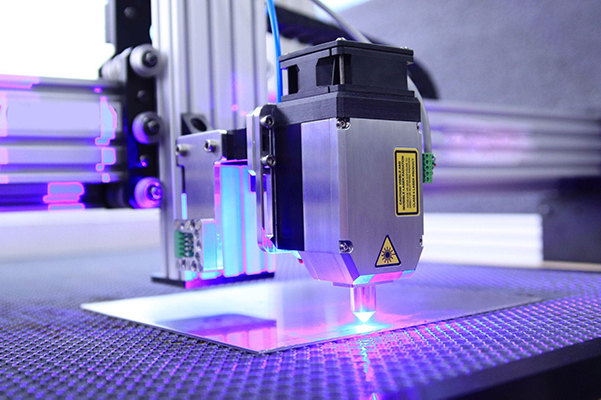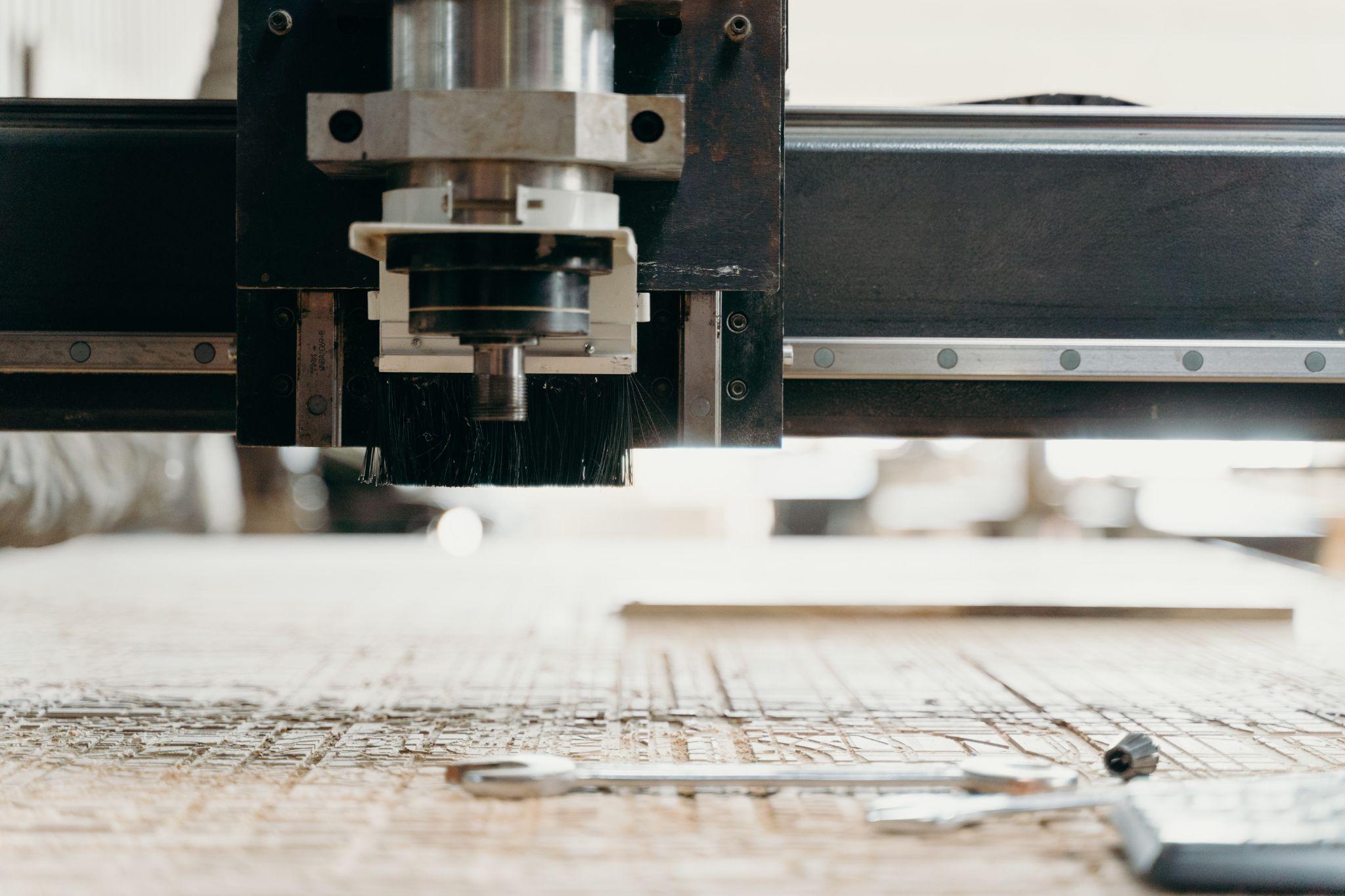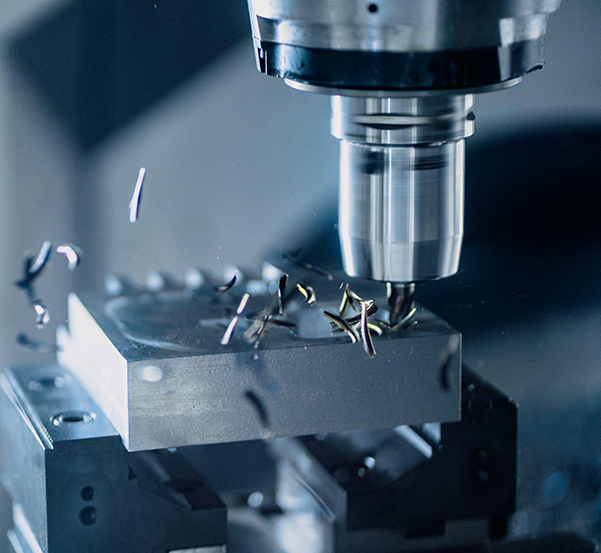Computer numeric control is referred to as CNC. Using numerical control, CNC routers utilize computerized systems to control machinery, cutting, shaping, and carving materials like wood, plastic, metal, and composites.
CNC router uses spindle for precise, controlled operations on workpieces. In contrast to conventional handheld routers, CNC routers are automated and run according to pre-programmed instructions. A robust machine frame, a powerful spindle, cutting tools, a bed or worktable supporting the workpiece, a control system, motors and drives for movement, and specialized software for programming and control are all essential parts of a CNC router.
A CNC router's machine frame offers the structural support and stability required for precise and accurate operation. It is often built from hard materials like steel or aluminum to reduce vibrations and guarantee endurance. The frame resists the forces produced during cutting operations while retaining the machine's stability.

The spindle rotates the cutting tool and is essential to a CNC router. Depending on the particular application's requirements, its power and speed capabilities might change. Spindles can use various tool holders to handle various cutting tools, including drills, router bits, and end mills. The precision and power of the spindle have a direct influence on the quality of cuts and the variety of materials that may be machined.
CNC routers use cutting tools to carry out various operations on the workpiece. End mills, router bits, drills, and specialty tools made for particular tasks like engraving or chamfering are some of these instruments. The material being cut, the required cut quality, and the intricacy of the design are all important considerations when choosing a set of cutting tools. The motions and cutting characteristics of the tool are predetermined by the exact toolpath created by the CNC software.
The surface on which the workpiece is fixed during cutting is the CNC router's bed or work table. It gives the workpiece a solid base that supports it during cutting and assures precise alignment. Worktables may include clamping or vacuum system options for holding the material. The maximum dimensions of the workpiece that may be machined are determined by the size and layout of the worktable.
The control system serves as the "brain" of the CNC router, deciphering the G-code commands and directing the machine's motions. It comprises a controller unit, which may be external or built within the machine, and an interface for entering commands and checking the machine's condition. The control system converts the digital commands into electrical impulses that operate the machine's motors and other components.
Motors and drives accurately move the axes of a CNC router. Depending on the application, these motors may be stepper or servo motors, each with unique speed, torque, and precision benefits. Drives connected to the motors translate the electrical impulses from the control system into mechanical motion. Thanks to a mix of motors and drives, the machine can move along the X, Y, and Z axes while performing the planned toolpath.
A CNC router's functioning is fundamentally influenced by software. It includes several parts, such as CAD (Computer-Aided Design) software for producing digital models or designs, CAM (Computer-Aided Manufacturing) software for creating toolpaths and translating them into G-code instructions, and machine control software for interacting with the CNC router's control system. Users of the program may create components, specify toolpaths, choose cutting settings, and practice the machining operation before going into full production.

1. The CAD process involves creating the detailed design of a part or object using specialized software, defining shapes, dimensions, and desired features using drawing tools and advanced modeling techniques.
2. The designer creates digital 3D models using CAD software, transforming the conceptual design into a virtual representation of a part or object, ensuring accuracy and desired aesthetics.
3. CAD software generates toolpaths, specific routes, and movements for CNC routers to shape materials and create desired features. These paths are determined by factors like tool geometry, material properties, and cutting parameters, ensuring precise machining.
1. CAM software imports 3D models from the CAD process, enabling machining, cutting parameters, tool selection, and toolpath generation based on design requirements.
2. CAM software defines toolpaths by specifying CNC router movements, cutting parameters, and tool selection, affecting efficiency, accuracy, and surface finish in machining processes.
3. CAM software generates G-code instructions, a standardized programming language, directing CNC router movements and operations, including tool changes, feed rates, and offsets, ensuring a precise machining process.

1. The G-code program loads CAM software into the CNC router's control system, interpreting instructions into electrical signals for motor control.
2. The operator secures the workpiece onto the CNC router's worktable using clamping mechanisms, vacuum systems, or fixtures for proper positioning and machining requirements.
3. CNC router homing involves establishing starting position, calibrating, and aligning movements to ensure accurate machining before machining.
4. The operator initiates the CNC router, coordinating axes and cutting tool movements based on the G-code program, ensuring the material is cut, shaped, or carved according to design specifications.
5. The operator monitors CNC operation to ensure smooth operation, observing progress, checking for anomalies, and making adjustments to optimize parameters, tooling, and settings.
Throughout the machining process, CNC routers provide outstanding precision and accuracy. Because these machines are computer-controlled, their motions are precise and constant, producing cuts and forms that are incredibly exact. Complex toolpaths may be programmed to produce elaborate patterns with precise tolerances that satisfy the most stringent standards.
The capacity of CNC routers to automate is one of its key benefits. After being programmed, CNC routers may operate with little assistance from a person. By automating the process, manual modifications are unnecessary, and the possibility of human error is decreased. Moreover, CNC routers have excellent repeatability, enabling the same program to be executed repeatedly to provide similar results, guaranteeing consistent quality across various workpieces.

CNC routers are renowned for their adaptability since they can handle various materials, including wood, plastic, metal, composites, and more. CNC routers can handle various materials and machining processes by switching the cutting tool and altering the cutting settings. Due to their ability to produce various goods and adjust to shifting project needs, manufacturers may increase their capabilities and market reach.
CNC routers significantly increase manufacturing process productivity and efficiency. These machines can do several tasks in a single configuration and run at high speeds, which shortens production times and boosts throughput. CNC routers promote machine usage and optimize workflow, increasing production and reducing lead times. They can operate constantly and consistently.
Although an initial investment is necessary, CNC routers are long-term cost-effective. CNC routers cut labor costs and eliminate material waste by automating milling. Precision cutting and effective material use maximize material utilization while lowering material costs. CNC routers also reduce the requirement for manual finishing and auxiliary processes, saving time and lowering manufacturing costs. The capacity of CNC routers to produce high-quality goods with improved efficiency and less waste indicates their overall cost-effectiveness.
CNC routers have transformed the woodworking industry by enabling accurate and detailed cutting, carving, and sculpting of wood products. They create woodworking crafts, furniture, cabinets, ornamental components, and moldings. CNC routers can precisely produce elaborate patterns, sophisticated joinery, and ornamental elements, improving the quality and appeal of timber items.

The sign and engraving industries make substantial use of CNC routers. They can precisely cut and shape various materials, including metal, wood, and plastic, to produce signs, dimensional lettering, plaques, and personalized engravings. The variety of CNC routers allows for the production of complicated designs, precise edges, and rounded curves, enabling the manufacture of aesthetically pleasing and expert-caliber signs and engravings.
CNC routers are essential in furniture manufacturing for making bespoke furniture items precisely and effectively. Several materials, including wood, plywood, and MDF, may be cut, shaped, and carved to produce elaborate patterns, ornamental accents, and challenging joinery. -To meet the various requirements of furniture makers and designers, CNC routers enable the manufacturing high-quality, bespoke furniture with exquisite features and constant accuracy.
Designers and manufacturers can swiftly translate their digital drawings into physical prototypes or limited production runs thanks to the widespread usage of CNC routers for rapid manufacturing and prototyping. -CNC routers can work with several materials to create prototypes for product testing, design validation, and market analysis. CNC routers are essential for quick production processes because of their speed, precision, and reproducibility.
CNC routers with the proper tooling can be utilized for metal manufacturing procedures. They can drill, cut, and engrave various metals, including aluminum, brass, and mild steel.CNC routers offer precise control, complex designs, and faster production. They have uses in aerospace, automotive, and metal art, where accuracy and adaptability are essential.

CNC routers are useful in the automotive, aerospace, electronics, and manufacturing sectors because they are excellent at cutting plastic and composite materials. Materials, including acrylic, PVC, ABS, and fiberglass composites, may be cut, shaped, and engraved by them. Precision plastic parts, unique enclosures, signs, and customized parts utilized in various applications may be produced using CNC routers.
For foam-cutting applications, CNC routers with specific cutting tools are used. Foam materials, including expanded polystyrene (EPS), polyurethane foam (PU), and foam boards, may be precisely shaped and contoured by them. CNC routers are used in the packing, cushioning, insulation, and foam modeling sectors, where accurate and complex foam forms are needed.
For cutting marble and stone, CNC routers with diamond-tipped tools are used. Stone materials such as granite, marble, and limestone may be precisely cut, shaped, and engraved. For the demands of the architectural, building, and creative sectors, CNC routers can carve complicated designs, relief carvings, and ornamental components in stone.
|
Safety Consideration |
Description |
|
Personal protective equipment (PPE) |
Operators should wear proper PPE, including gloves, closed-toe shoes, ear protection, safety glasses or goggles, and no loose clothes or jewelry. -This lowers the possibility of harm and safeguards against potential dangers. |
|
Machine Guarding |
CNC routers should be fitted with sufficient guards and barriers to avoid unintentional contact with moving parts. Safety interlocks or presence-sensing devices can be fitted for automated machine stopping in case of danger. Inadvertent contact or entanglement injuries can be reduced with proper machine guarding. |
|
Tool and material handling |
Before turning on the machine, operators must ensure the cutting tools are securely fastened and properly positioned. They should adhere to suggested rules for instrument changes and modifications to reduce the risk of damage. -To prevent mishaps when handling materials, hands should be kept safely away from the cutting area, and suitable lifting techniques should be employed. |
|
Dust and chip extraction |
CNC routers produce dust and chips during machining, harming one's health and safety. An efficient dust and chip extraction system should be in place to remove dust and chips from the air and prevent buildup on the machine or the operator. Eliminating fire threats and maintaining a clean, safe working environment are made possible by adequate ventilation and dust-collecting systems. |
|
Emergency stop procedures |
The emergency stop procedures and the position of the emergency stop button on the CNC router should be known to operators. Pressing the emergency stop button quickly turns the machine off in an emergency or a dangerous situation. In possible risks or mishaps, operators should be trained on emergency stop procedures and be ready to act quickly to cease the machine. |
CNC router technology's future focuses on automation and robotics integration, enhancing efficiency, reducing downtime, and improving productivity in tool changes, material handling, and part manipulation.
Advanced software solutions for CNC router programming and operation will enhance user interfaces, programming capabilities, and simulation features, enabling accurate visualization, reduced errors, and improved toolpath optimization.
Spindle and cutting technology will evolve, enhancing performance, speed, and versatility. Future CNC routers will feature powerful spindles, increased RPM, and torque, enabling faster, more precise operations and longer tool life.

Incorporating CNC routers and 3D printing technologies results in hybrid machines that can perform subtractive and additive manufacturing processes, enabling complex structures and combining benefits in a single device.
CNC router technology is expected to combine Internet of Things connection and data analytics to monitor machine performance, tool wear, and material utilization. -This will enhance operating efficiency in CNC router operations, optimize manufacturing processes, and forecast maintenance requirements.
CNC routers revolutionize manufacturing by providing precise and accurate cutting, shaping, and carving capabilities. They offer automation, repeatability, versatility, efficiency, and cost-effectiveness. The basic components of a CNC router include the machine frame, spindle, cutting tools, bed, control system, motors, drives, and software. Safety considerations include wearing PPE, machine guarding, safe tool handling, dust and chip extraction systems, and emergency stop procedures. CNC router technology is expected to advance with enhanced automation, robotics integration, software and simulation capabilities, spindle and cutting technology, additive manufacturing, and IoT connectivity. These advancements drive efficiency, productivity, and precision in CNC router operations, delivering high-quality products, improving productivity, and reducing costs.